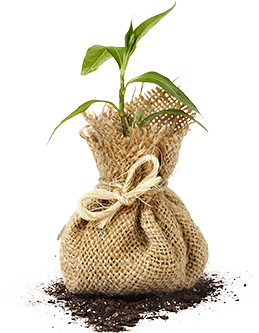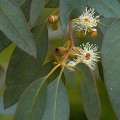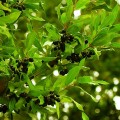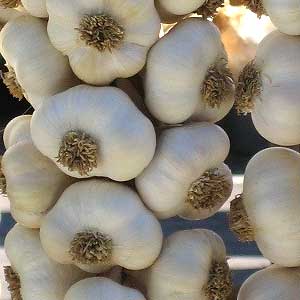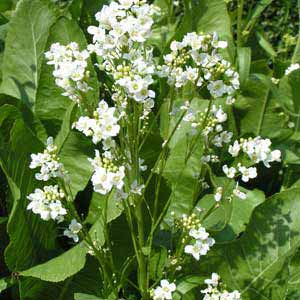 Botanical name: The armorakia spoons (Armoracia rusticana) belongs to the family of cruciferous (Brassicaceae). Originally from southern and Eastern Europe. We usually encounter cultivated, but often and wild in fields and on the edges of roads. Reaches a height of up to 1 m., has off passalwti root, large sessile leaves and small white flowers. It blooms from May to July.
Botanical name: The armorakia spoons (Armoracia rusticana) belongs to the family of cruciferous (Brassicaceae). Originally from southern and Eastern Europe. We usually encounter cultivated, but often and wild in fields and on the edges of roads. Reaches a height of up to 1 m., has off passalwti root, large sessile leaves and small white flowers. It blooms from May to July.
The horseradish was historically very widespread as a remedy, Spice and vegetable but in conventional medicine was not as now of great importance.
From the horseradish used the roots and leaves, raw as a juice or as a ready-made preparations.
Properties: The plant has strong smell and flavor and even the trimming of root can irritate the eyes. Important ingredients are e.g.. the mustard oil glycosides of mustard oil asnd and, flavonoids, the asparagine and vitamin C, which act mostly antibacterial and bactericides. In this plant are attributed efidrwtikes, antirreymatikes, diuretic and appetizing properties. The pungent taste of Horseradish root due to the high content of mustards. Excessive drinking can cause colic.
Use: The horseradish is used in curative primarily because of its diuretic and digestive action. We must also highlight the energy due to efidrwtikes properties of this plant in hay fever case of upper respiratory tract as well as in case of fever, colds and flu. Additionally used as adjuvant therapy for urinary tract infections. Drink two to three times a day 1 spoon mixture of grated root and honey in the ratio 1:1.
Guests currently searching, are reading here for: xreno, you will find chreno, horseradish slimming sensitis, chreno you find, chreno price, chreno sheets.







